Through fifty years of epic stories, art, and personal ephemera, The Fletcher Family spans surfing's golden era to the present day, when bathing-suit model Dibi and competitive surfer Herbie met, to raising talented Christian and Nathan on boards and waves, to passing the torch to their skating-phenom grandson, Greyson.
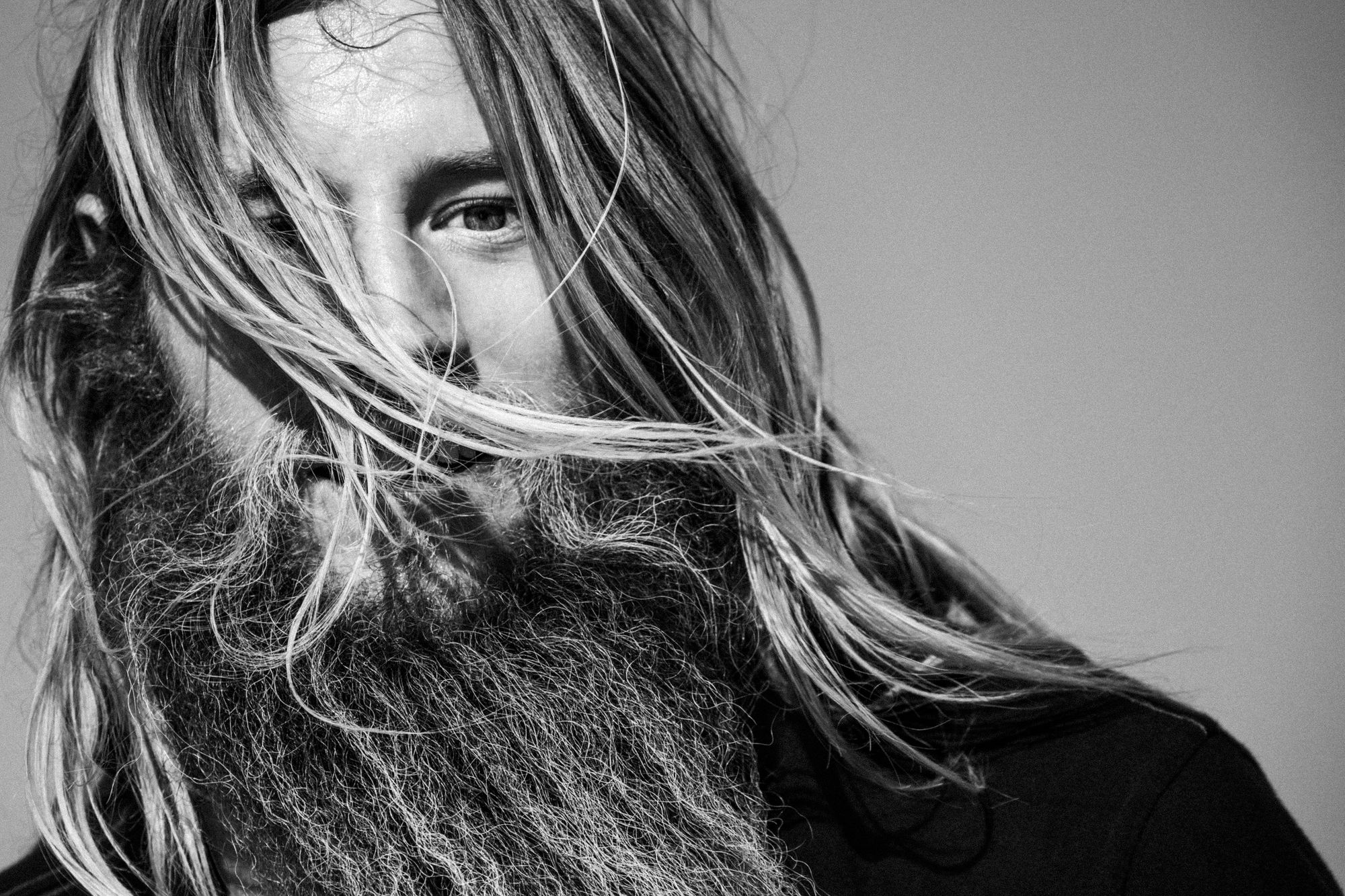
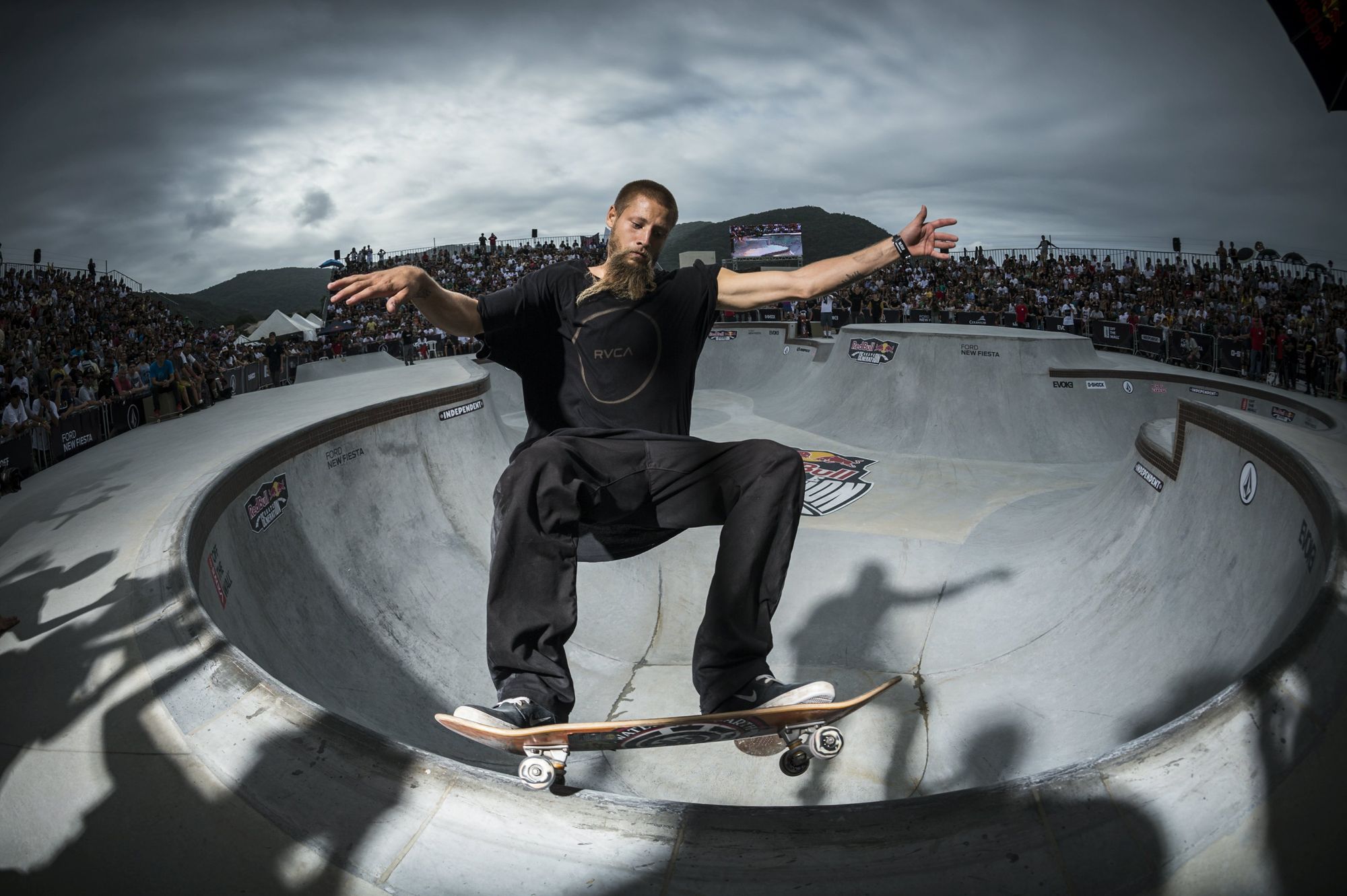
The epitome of both surfer cool and punk counterculture, the Fletcher family for the first time has put together a window into their immensely colourful life. A visual memoir of this near-mythological surf family, The Fletcher Family is sure to appeal to their massive surfing fan base, young skaters, and those who are interested in the Fletcher family and their place in Southern California as a subcultural force of nature.
Fletcher: A Lifetime in Surf, is written by Dibi Fletcher—wife of Herbie and matriarch of what Esquire has called “surfing’s first family”—simultaneously traces the evolution of the Fletcher family’s life and offers an oral history of surfing’s counterculture from the 1950s to today.
Throughout the volume, the family’s intimate storyline is augmented with anecdotes from luminaries including surfing legend Gerry Lopez, Mike Diamond of the Beastie Boys, artist Julian Schnabel, eleven-time world champion pro surfer Kelly Slater, and Steve Van Doren, of the Vans skate shoe company. Dibi’s recollections begin with her childhood memories of her father, big-wave surfing pioneer Walter Hoffman. She then goes on to narrate her union with Herbie, as well as the lives of their sons Christian and Nathan, both surfers, and their grandson, Greyson, a renowned skateboarder, all of whom have erased the boundaries between surfing and skateboarding.
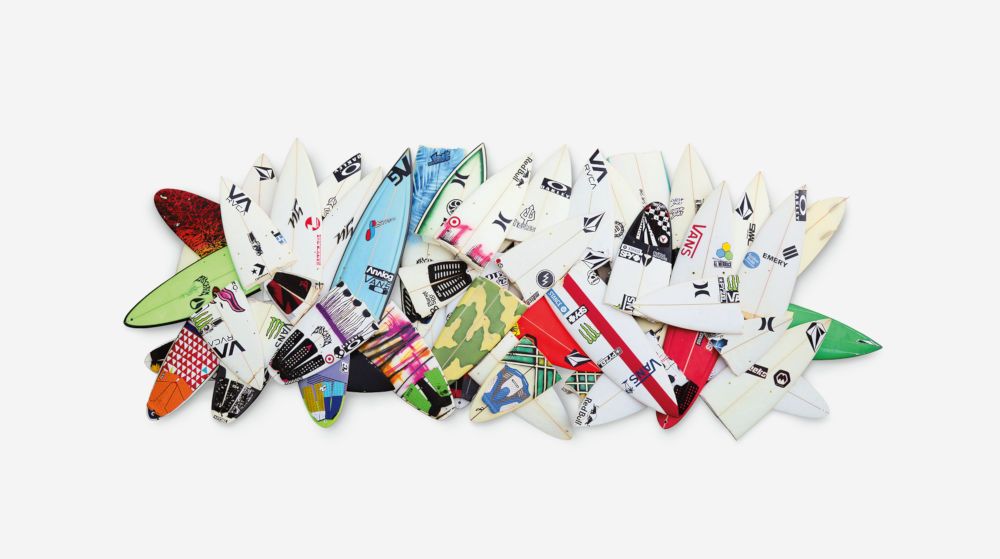
To commemorate the publication of the book, Gagosian installed artworks from four different series by Herbie Fletcher at 976 Madison Avenue. Fletcher’s Wrecktangles are large sculptures made from once-perfect, custom surfboards that have been ridden and broken by the greatest contemporary tube riders at the Banzai Pipeline in Hawaii. For years now, elite surfers, known as “Wave Warriors,” have saved their boards to be made into Wrecktangles.
The accumulated boards tell oblique stories about the culture of surfing.
Herbie Fletcher is a surfing legend. Fletcher and his sons, Christian and Nathan, made a habit of doing things exceptionally well and in their own way before they became the norm. But the Fletchers are not merely trailblazing surf and skate legends; they also are counterculture and subculture icons. T Magazine referred to them as having "punk family values." Their sincere love for art and surfing and their collective DGAF attitude has earned them legions of devoted fans and friends from so many different worlds: music, fashion, streetwear, and art.
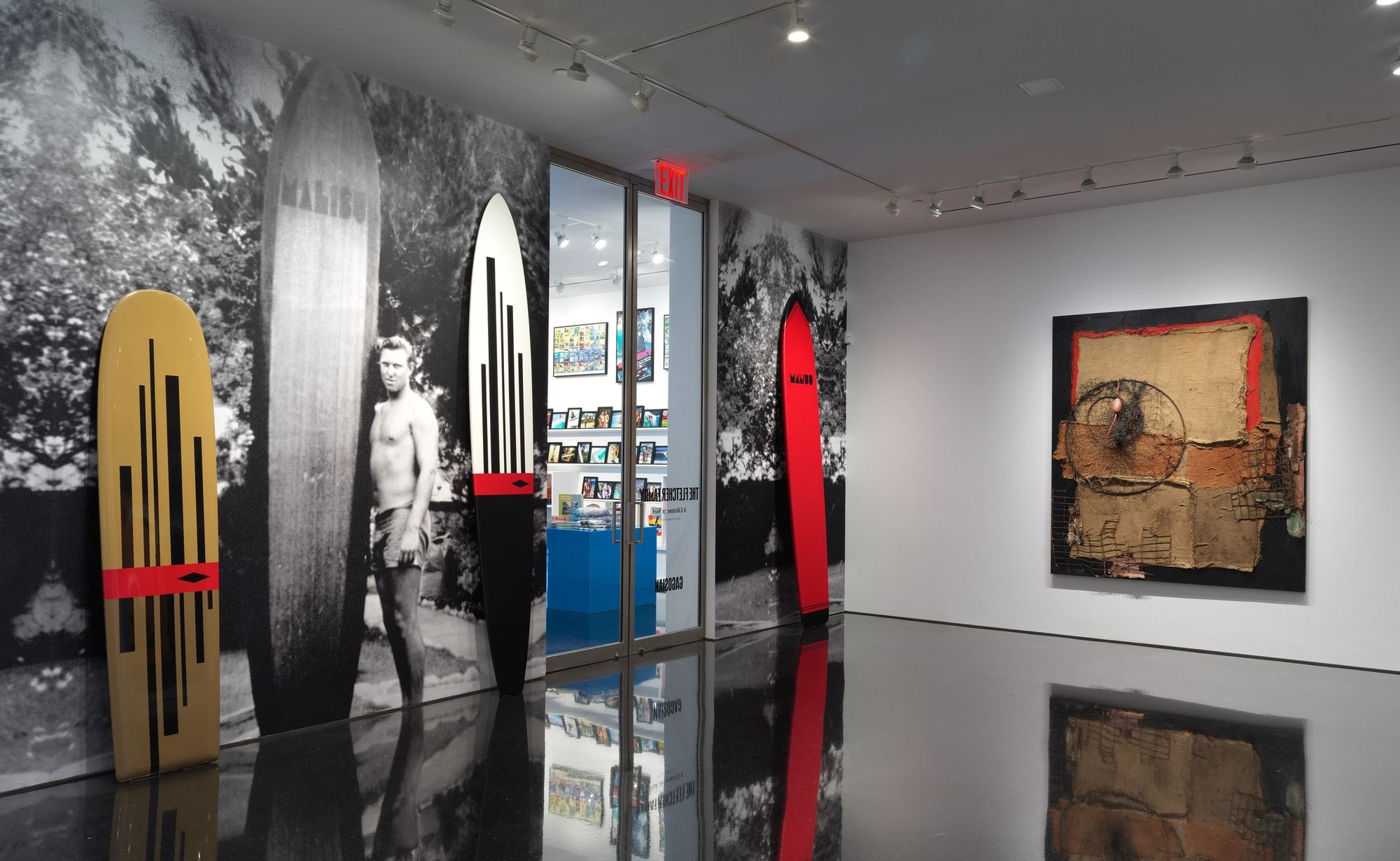
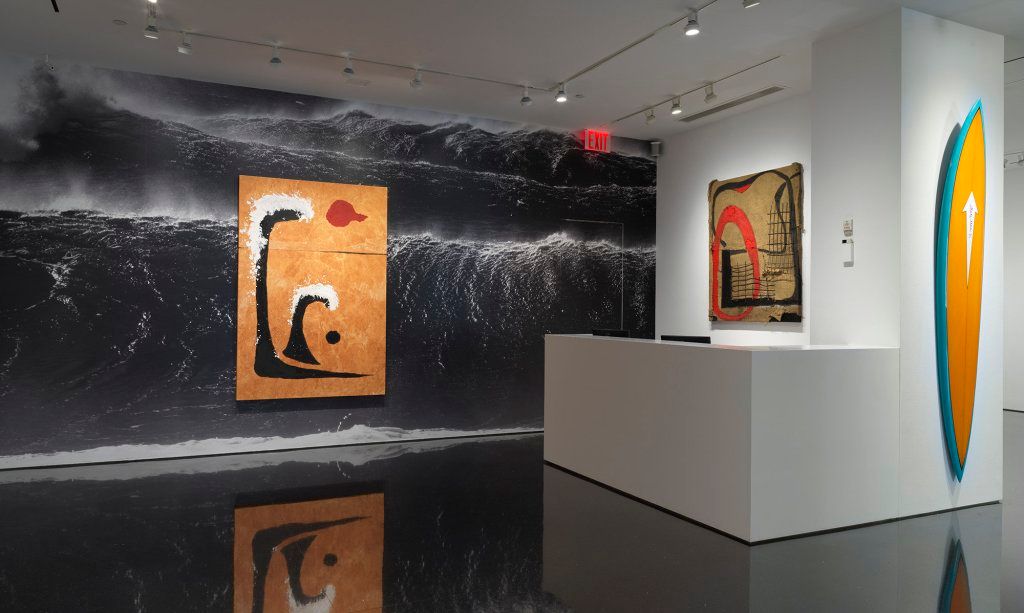
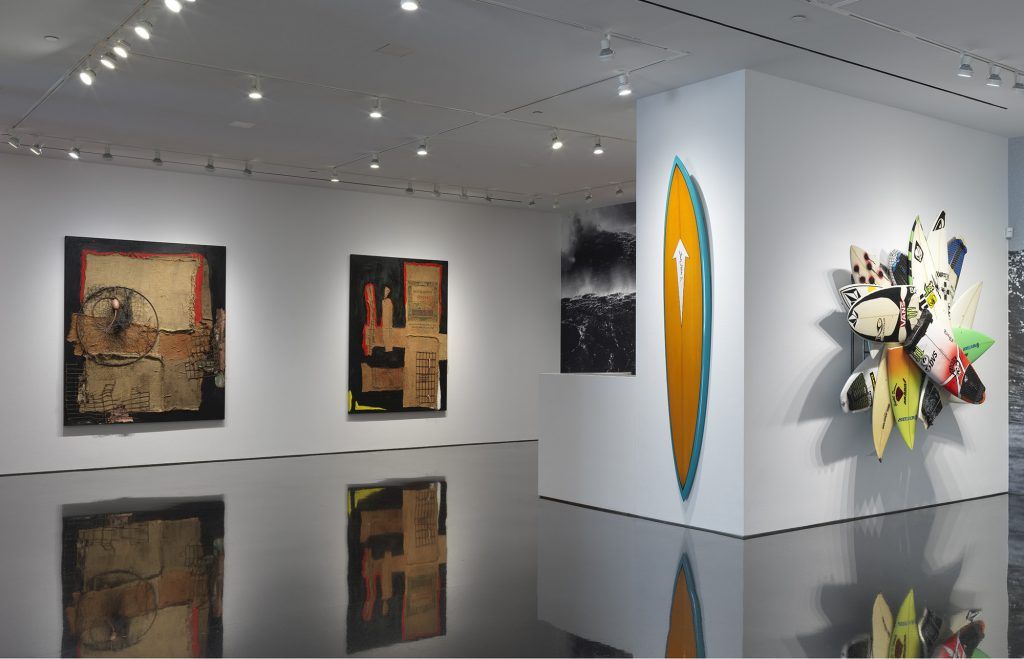
In his Blood Water paintings, Fletcher uses mineral-rich earth from the Waimea River, Hawaii. After the winter rains on the North Shore of Oahu have subsided, he paddles up the river with large pieces of untreated canvas on the nose of his surfboard, staining them in the iron-oxide-rich red earth washed down from volcanoes. After they are completely saturated, he paddles back to the coral sand beach and lays the canvas out to dry, creating visions reminiscent of ancient petroglyphs. Similarly, in his Connecting to the Earth paintings, Fletcher affixes found objects from the Hawaiian shores such as netting, and burlap used to carry taro, to the canvas, paying homage to native Hawaiian traditions.
Gagosian also screened the film Heavy Water, a documentary about Nathan Fletcher, with an introduction by Julian Schnabel.
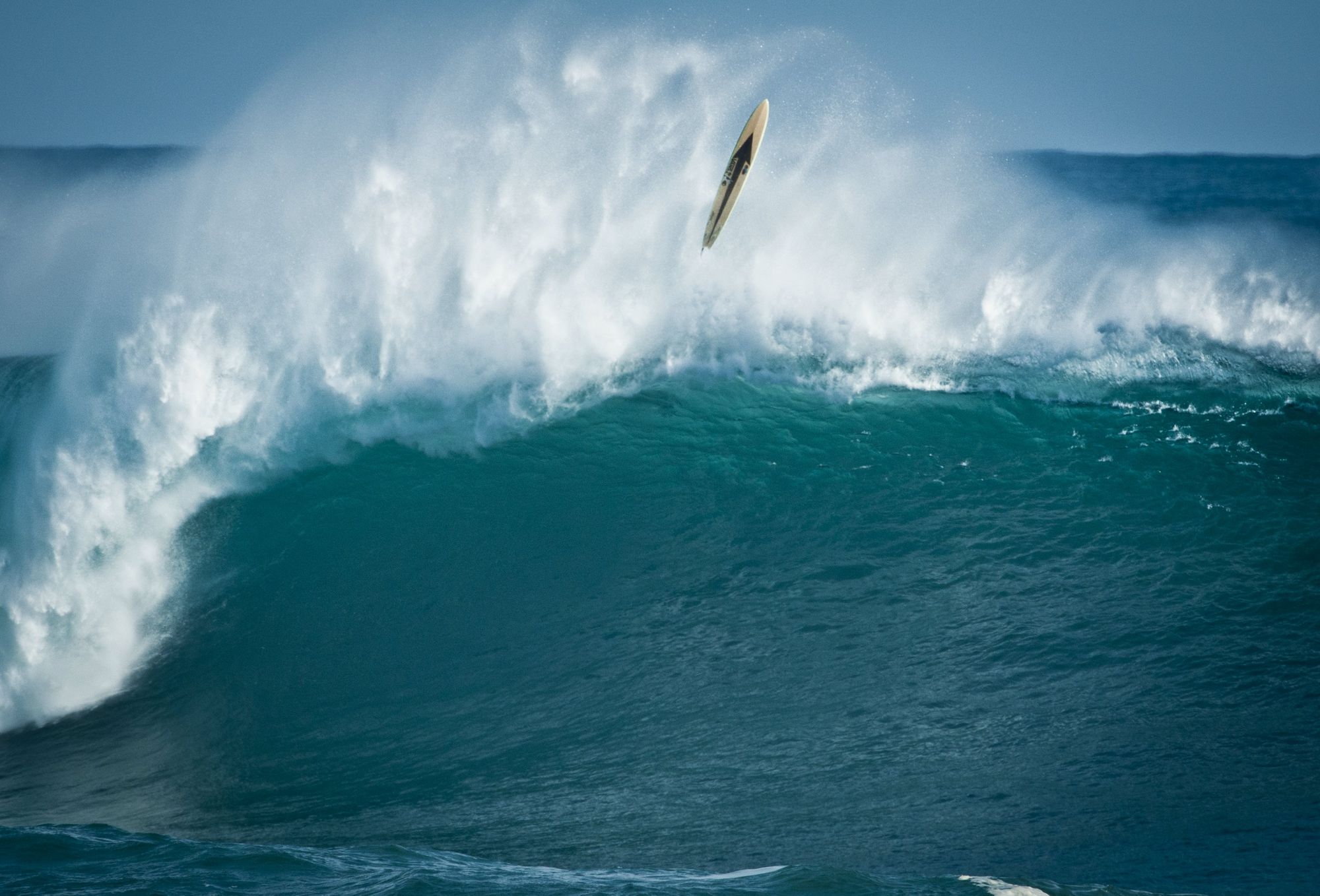
Nathan Fletcher was a world-class aerialist early in his career, then a fearless rider of big, dangerous waves. Fletcher was born in 1974, the scion of an influential surf-world family that includes older brother Christian, the sport's heavy metal aerial pioneer, father Herbie, longboard maestro and surf accessories manufacturer, aunt Joyce Hoffman, twice world champion, and grandfather Walter Hoffman, big wave original and textile magnate.
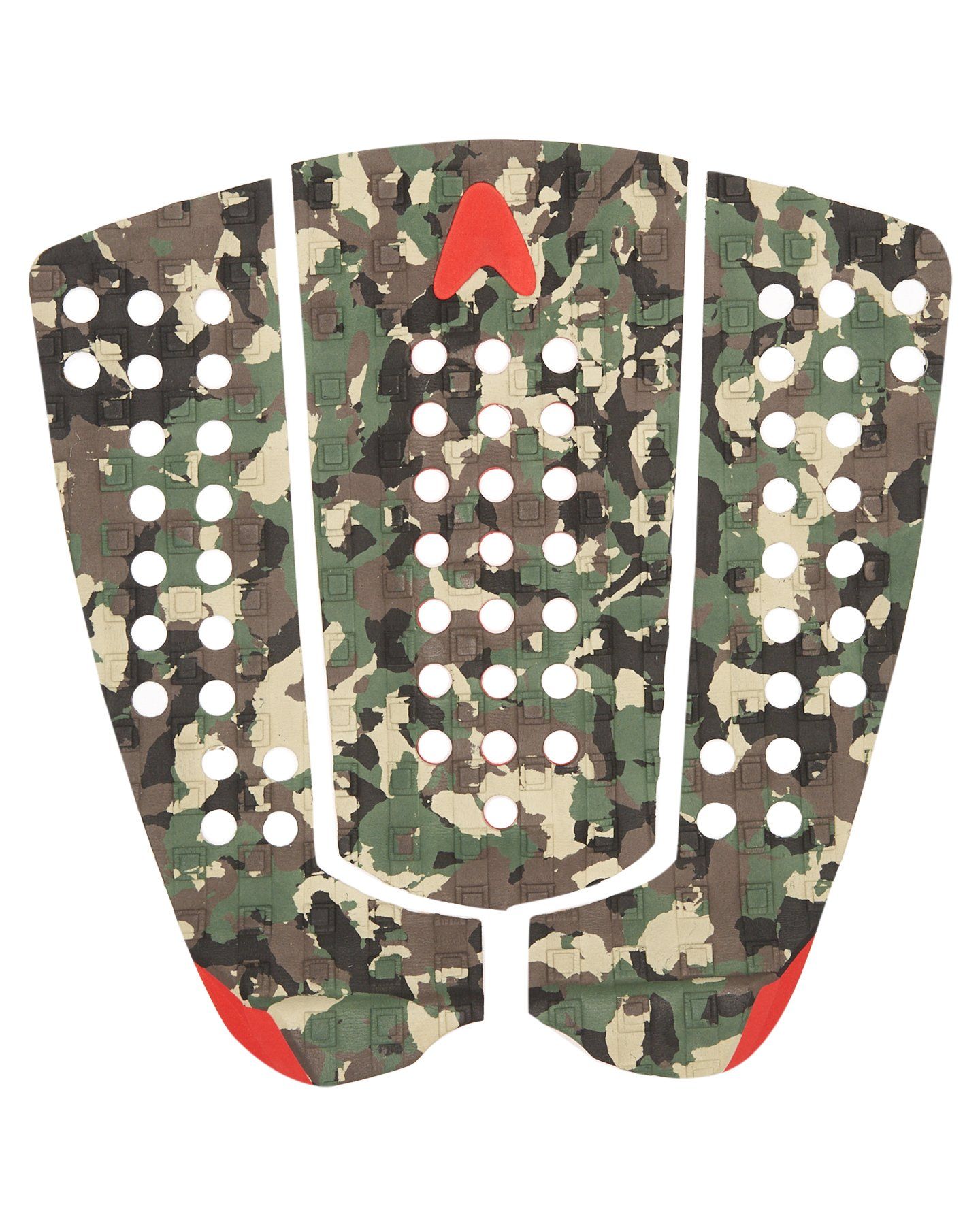
In 1976, Herbie created Astrodeck in his own lab—the world-famous traction pad company. “I looked at it like the last part of my shaping job by adding kicks, arches and different surface patterns for ultimate grip and control, until the designs eventually evolved into the patented multi-grid lock high performance foot pad of today,” explains Herbie. Dibi added, “We’ll always have market share as long as I stay authentic. Companies went too big, they have to make their quarterly earnings. If you want big, you have to go and push your brand all over the place. Pretty soon you have no story left because you whitewashed it to death to get your corporate earnings.”
Next time you are going out to buy some traction pads for your board, think about who you would rather support. Check out the new collection on the official site.
